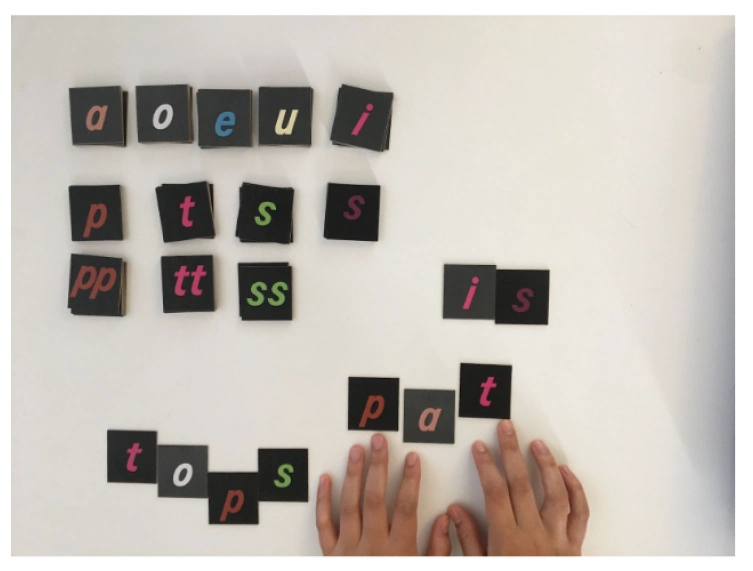Results
Parent Testimonials
Posted onTrustindex verifies that the original source of the review is Google. I have sent 2 of my children here, a teen and a 2nd grader. Both saw great improvements right away. The tutoring was completely in line with the school curriculum and completely up to date with the latest science and techniques being used in their schools. The kids loved their tutors and looked forward to seeing them, which made it feel less like additional work. My 2nd grader’s teacher commented after a couple months that my daughter had completely turned around and was doing significantly better. I can’t recommend enough.Posted onTrustindex verifies that the original source of the review is Google. I was impressed with the success we had after trying other places. This is a great approach to learning. Thank you!Posted onTrustindex verifies that the original source of the review is Google. Great experience great staff would truly recommend to everyone!!!Posted onTrustindex verifies that the original source of the review is Google. Be Brilliant Tutoring is beyond brilliant! Top notch educators that really make an impact!Posted onTrustindex verifies that the original source of the review is Google. I’m really impressed, this has been so helpful……thank you!Posted onTrustindex verifies that the original source of the review is Google. The tutors are friendly and knowledgeable. The rates are extremely reasonable along with having the convenience of having them come to my home. I highly recommend them!Posted onTrustindex verifies that the original source of the review is Google. We've had a great experience with BBT! Our first-grader has been working on math and reading with Paula. She helped him find books that he loves, which makes a huge difference. (And she even let him borrow one of the books, which he loved so much that he slept with it under his pillow!) In math, it's giving him the opportunity to explore concepts beyond what they were doing in his class, which keeps him interested and engaged. The whole thing is positive and fun --highly recommended!Posted onTrustindex verifies that the original source of the review is Google. Finding Be Brilliant was a life saver for us! Our kindergartener gained knowledge and became secure of what he knew; he understood that he could do it; in a few tutoring classes we saw the change. We are grateful that we found them, specially Ms. Doris she is great, with a lot of experience and patience!. She went with the best approach to work with our son so he could improve his reading skills and confidence, he loves her and is happy to work with her. We recommend Be Brilliant 100%. They will make sure that your child gets the help needed. We are forever grateful!
Subjects we teach
Enrichment
Remedial
Special Projects (speeches)
Age 4-16 English Language Arts (reading and writing)
Age 4-16 Mathematics
PROVEN RESULTS
All of our tutors have taught and played leadership roles at the highly successful Bronx Charter Schools for Better Learning. Be Brilliant! Tutoring uses the same core pedagogy as BBL.
Our approach to supporting learning has been proven with thousands of students. Our master teachers serve all children:
- • from those who need to catch up, including those labeled with a learning disability,
- • to those already doing very well, who want to do even better
- • … and everyone in between.
2018-19 MATH NY State Test Results 3rd thru 5th Grades Combined
Subject
Math
Percent Proficient
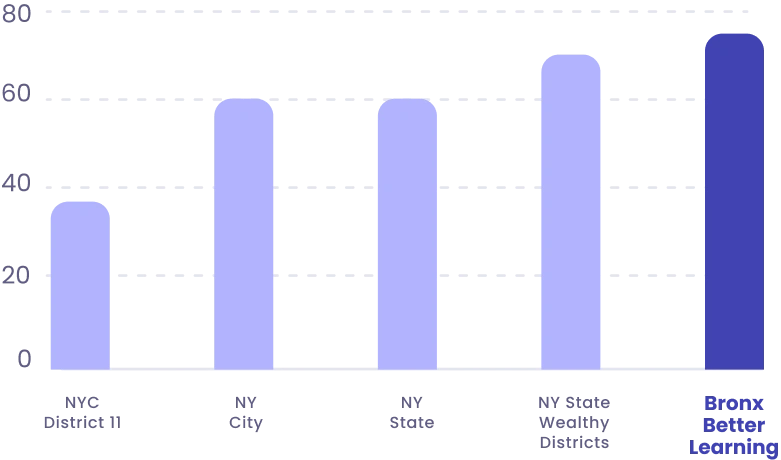
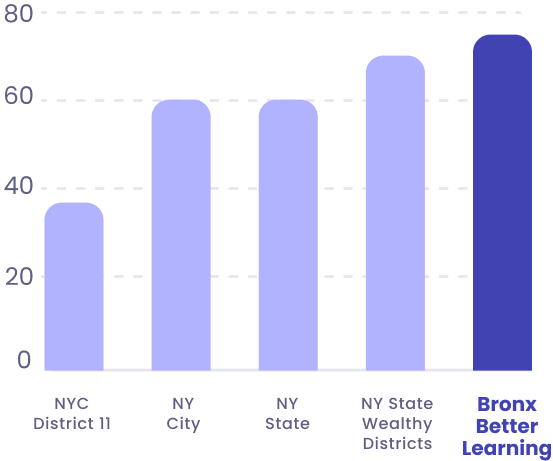
2018-19 ELA NY State Test Results 3rd thru 5th Grades Combined
Subject
ELA
Percent Proficient


The two charts above compare the pre-pandemic achievement of Bronx Charter Schools for Better Learning (BBL) students to that of their peers, most notably the overall average subset of the wealthiest school districts in New York State. The children at BBL – 80% of whom live in poverty – outperformed their far wealthier peers in Reading, Writing and Mathematics.
Uniquely Engaging Materials
Coupled with the refined techniques used by our Master Teachers, our colorful and engaging materials lead to rapid progress in mathematics, reading and writing. These proprietary materials are carefully crafted to invite exploration and ah-hah! moments, thereby keeping children in touch with their brilliance.
They are designed to be flexible and to address the very basic to the most advanced topics in both subject areas.
Our instructional resources therefore provide our highly experienced tutors with everything needed to support the learning of children from 4 to 16 years old, whether they are beginning their academic journey, struggling in school, or accomplished learners ready to reach new heights.
Perfect for more advanced students too!
- Math
True mathematics is all about relationships.
Using a set of 10 math rods that vary by color and length, our students quickly develop an understanding of the basis for arithmetic and many advanced topics, such as fractions, decimals, algebra and trigonometry.
These instructional materials can support learners in understanding preschool, elementary school, middle school and high school math topics.
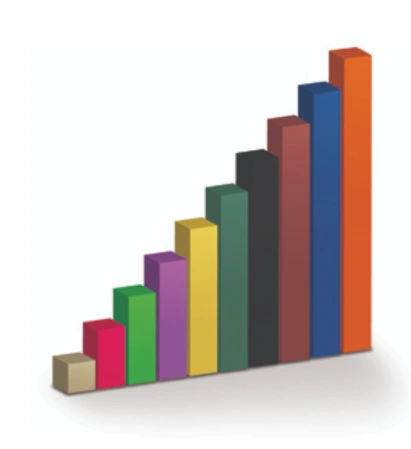
Mathematical Relationships

Addition
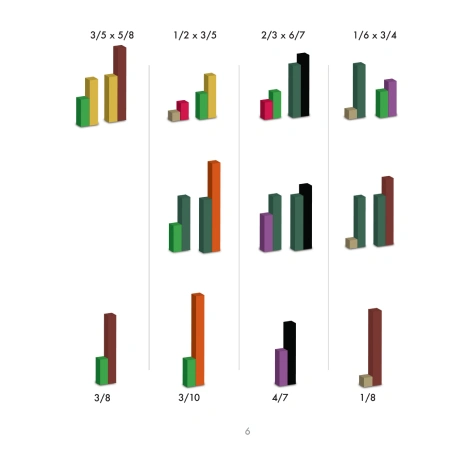
Multiplying Fractions
How math is made easy
Working through challenges generates first hand experience. With this experience, students can easily verify their answers – they do not have to rely on the teacher to know if they are correct.
Students first use their own words to describe the insights developed out of their experiences. When the time comes to switch to the traditional vocabulary of mathematicians, it is easily understandable.
The tools used to create situations include Algebricks, Geoboards, and The Number Array. These materials enable the creation of a rich and diverse range of mathematical situations that build upon each other.
Students can move from one area of study to another, while using the experience from the first to understand the next. For example, division can be derived directly from subtraction and does not require the knowledge of multiplication as is commonly thought.
- ELA - Reading & Writing
Successful reading and writing start with a clear understanding of the relationship between spoken and written English.
Unfortunately, traditional phonics programs introduce new content in black and white, thereby hiding the reality of written English, which is more complex than the oversimplified idea that every letter is associated with just one or two sounds.
The materials we use for the basics of reading and writing are a highly effective alternative, which introduce all new sounds according to a consistent color code. Learners can see how words are sounded, which speeds up and clarifies the process of learning how to read and spell well, without oversimplifying and misleading the learner. As a result, children learn faster and with greater self-assurance as we transition them to reading in black and white.
But our Master Teachers don’t stop there.
During the process of learning, we incorporate, into every lesson, work on vocabulary, writing and comprehension, all finely tuned to each child’s actual needs, including students who are more advanced.
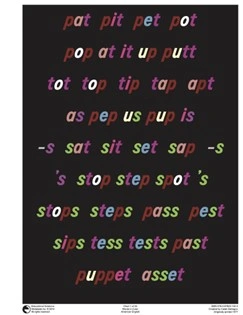
Chart 1 of 20

Chart 7 of 20
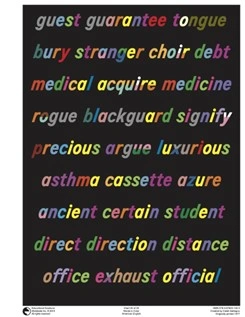
Chart 20 of 20
- ELA
The English alphabet has 26 letters, yet we use more than 26 sounds in our speech. In fact, American-English speakers use 59 sounds, and there are often many ways to spell the same sound – sometimes dozens of ways. This is very confusing for beginning readers because letters only show how a word is spelled, not how it is spoken. We have identified all 400+ sound-spellings in American English and organized them into 59 distinctly colored groups. With color, students can see how a word is spoken, and more quickly become aware of the nature of the written language.
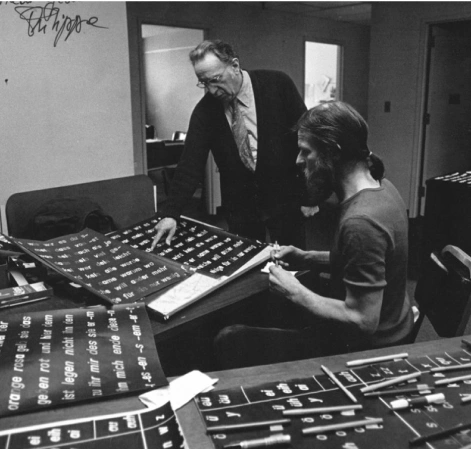

Color provides students with a logical, phonetic basis for decoding and reading specific words. One by one each sound-spelling is introduced and put into circulation with various teaching techniques. Once initial connections have been made between the letter’s shape, color, and sound, we engage the student in games that further explore the words, sounds, and spellings. The challenge of the games increases, and additional exercises and activities are provided to help apply the students’ knowledge. When done correctly, the process ends with mastery of the skill of reading, writing, and spelling.
At BBT, we use Words in Color materials and teaching techniques are unlike any other in the world. There are several reasons why, but here are the main 3.
- Words in Color triggers the natural faculties that enable learning.
- Words in Color doesn’t hide from the difficulties and ambiguities of written English.
- Words in Color was conceived out of a technical understanding of the learning process.
Methods we use are similar to those used spontaneously by children whenever they learn independently of adults in essential fields of experience. An example of this is when a child learns to walk; a parent does not have to tell the child to put one foot in front of another. Instead, the child learns through observation and experimentation. Since a child doesn’t forget how to walk, we know that they have truly learned the skill.
Words in Color methodically triggers strong natural faculties like awareness, imaging and experimentation, and ignores weaker faculties like memorization.
Readably uses a unique color system to eliminate inconsistencies between spelling and pronunciation.
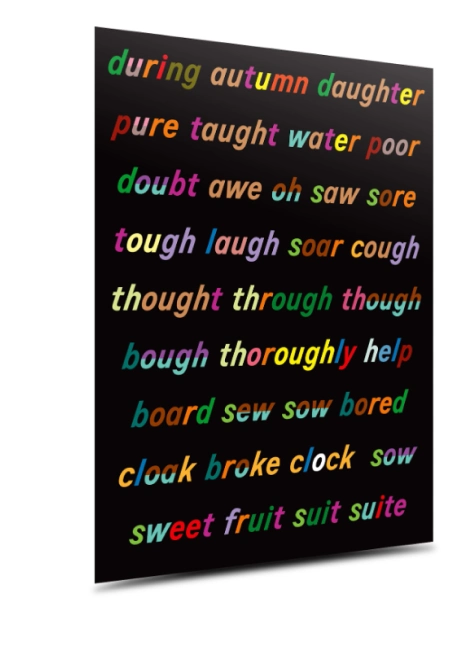
Consider Words in Color Word Chart 16 of 21:
The ambiguities introduced on this chart are a small fraction of those that exist. However, they are representative of the complexities inherent in a non-phonetic language:
- sew, sow, and sow
- suit, suite, and sweet
- soar, sore, board, and bored
- tough, cough, thought, through, though,
- bough, thoroughly
- sow, bough, doubt
- sow, though
- autumn, taught, cough, thought
With Words in Color, each sound is given its own unique color. This transforms the language into one that, from an educational perspective, can be seen as phonetic. In other words, students can look at the colors and accurately “sound out” the word. We are not aware of any other approaches to teaching reading, writing and spelling that deal with the ambiguous nature of the language in such a thorough and complete way.
